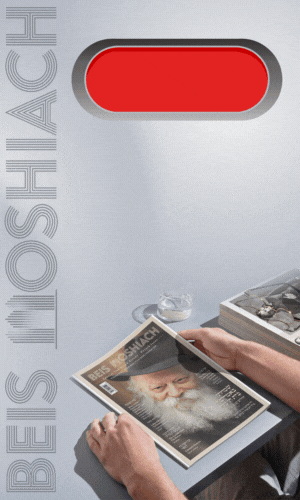Shuls Close But Chabad Expands In Long Island
The Orthodox Chabad Lubavitch movement on Long Island is showing rapid growth, with the number of its centers more than doubling during a time when synagogues have merged, lost members or closed ● Long Island now is home to 32 Chabad centers, compared with 14 in 2000, and 45 Chabad rabbis, a big jump from 17 rabbis in 2000 ● Full Story
The Orthodox Chabad Lubavitch movement on Long Island is showing rapid growth, with the number of its centers more than doubling during a time when synagogues have merged, lost members or closed.
Long Island now is home to 32 Chabad centers, compared with 14 in 2000, and 45 Chabad rabbis, a big jump from 17 rabbis in 2000.
The growth mirrors an international trend: Worldwide, there are an estimated 4,100 Chabad rabbis, compared with 1,800 in 2000. The number of Chabad centers has at least doubled in that period — to 3,500, the group says.
“Our approach has really touched a chord with many of the unaffiliated. No pressure — for a lot of people that is a very welcome approach,” said Tuvia Teldon, who in 1977 was the first Chabad rabbi on Long Island and now heads the movement in Nassau and Suffolk. “There is a thirst there. People do want to know what is Judaism and how it can better my life.”
Growth stokes tension
Leaders of other branches of Judaism on the Island applaud Chabad’s commitment to outreach and its programs, but note that its growth has fueled concern in areas where long-established synagogues are showing declines in membership.
Rabbi Charles Klein, leader of the Merrick Jewish Centre, a Conservative synagogue, said, “There are tensions, there’s no denying that.”
The Chabad, with international headquarters in Brooklyn’s Crown Heights section, consider themselves part of the Hasidic branch of Orthodox Judaism, which includes other Orthodox groups such as the Satmar, with strong bases in Borough Park and Williamsburg.
Like other Hasidic groups, the Chabad follow a strict regimen. They pray three times a day, keep men and women separated by dividers during religious services and observe a kosher kitchen in their homes — sometimes maintaining two sinks, sets of plates, sets of utensils and cups to keep dairy and meat products apart.
During the Shabbat, from sundown Friday until sundown Saturday, they are forbidden from driving, cooking, turning on the television, making a phone call or using electricity.
Numbers hard to gauge
It is difficult to gauge how many Jews frequent Chabad centers on Long Island, in part because they do not have official membership lists, such as those kept by synagogues.
Klein, also a former president of the New York Board of Rabbis, estimated that as many as 14,000 people attend Chabad services on the Island during the High Holy Days of Rosh Hashanah and Yom Kippur, though the majority are not Chabad themselves. Thousands more take part in Chabad programs.
At least 10 non-Chabad synagogues in Nassau have closed or merged in the last decade or so. Several have met the same fate in Suffolk, Jewish leaders in Nassau and Suffolk said. Some of those remaining are considering mergers, too, Klein said. Long Island is home to about 315,000 Jews, many of them unaffiliated, according to community leaders.
They are distributed among the three main movements of Judaism. Orthodox Jews adhere to a strict interpretation of the Torah and follow rules such as keeping men and women separate during religious services. Conservatives also follow ancient laws and traditions, but believe they can be changed to suit the times. The Reform branch respects the ancient traditions but believes individuals can make choices about which ones to follow.
Welcoming outsiders
What separates Chabads from other Hasidic groups is their approach to outsiders. While the Satmar and others are insular, Chabad are the opposite: They pride themselves on their openness, friendliness and outreach to others, including unaffiliated or non-practicing Jews.
Their motto is “Judaism with a smile.”
They literally welcome with open arms any Jew to their centers, which serve both as synagogues for religious services and as community centers that offer everything from Hebrew lessons and Torah study to preschools, outreach to children with special needs, and yoga classes.
Chabad rabbis — characterized by their long beards, black hats and black suits, as are other Hasidim — walk the streets looking for Jewish people with whom they can perform a “mitzvah,” or good deed, such as placing a leather prayer box called a tefillin on a person’s arm and head while they pray. Some rabbis can be found at tables in supermarkets with signs that say, “Do you have questions on kosher? We have a rabbi to answer.”
They say they are not looking for converts to Chabad, but are trying to educate Jews about their faith and spark renewed interest among those who have fallen away.
“The warm, nonjudgmental approach is a fundamental key to success,” said Rabbi Yaakov Saacks of the Chabad center in Dix Hills.
Reasons for growth
Experts said other reasons for Chabad’s growth include the lack of required fees at most of their centers, their persistent efforts to contact the unaffiliated, and the quality of their programs.
“I think very highly of Chabad,” said Steven Moss, a Reform rabbi in Oakdale who is president of the Suffolk County Board of Rabbis. “Their programs are fantastic.”
The Chabad-Lubavitch movement was born 250 years ago and is named for the town of Lubavitch in White Russia, where it was based for its first century. It steadily spread throughout Russia and surrounding countries.
The movement is guided by the teachings of its seven leaders or “rebbes,” dating to the first, Rabbi Schneur Zalman of Liadi, who was born in 1745. The most recent and influential rebbe, Rabbi Menachem Mendel Schneerson, helped guide Jews after the Holocaust and established the headquarters in Crown Heights. He died in 1994.
Global growth
The movement says it has flourished worldwide. Today it operates 3,500 Chabad centers in more than 65 countries and 49 states. It says a new center opens on average every 10 days.
Chabad’s growth on Long Island and elsewhere has not been without controversy. Leaders of some Reform and Conservative synagogues, including Klein and Moss, said many rabbis fear that Chabad’s approach is thinning the ranks of their membership and threatening their synagogues’ existence.
“They have been very successful in their outreach effort. They are without question a presence on Long Island,” Klein said. “The relationship has been a difficult one between many synagogues and the Chabad presence in particular locations.”
Teldon, who now heads the Chabad movement on Long Island, said Chabad does not threaten established synagogues because the movement mainly focuses on Jews he calls “unaffiliated.” He said he believes Chabad will make all Jewish organizations stronger by encouraging interest in Judaism among Jews in general.
“We are very positive about the future of Judaism on Long Island,” Teldon said.
Chabad criticism
Allan Nadler, a rabbi, professor of religion at Drew University and longtime critic of the movement, said he considers Chabad “soft-core missionaries” who water down Judaism to attract more followers. He also said their expressed refusal to judge Jews who are not Chabad isn’t genuine.
“They create the illusion of being completely accepting and tolerant and loving of all Jews,” Nadler said.
Teldon dismissed the critiques, saying Chabad have not watered down anything.
“We are very, very traditional,” he said. “We keep to the Torah and we do it with our full heart and soul.”
Teldon also said Chabads are truly open to all Jews and take great pleasure in strengthening their faith.
Some Chabad groups operate out of synagogues, while others are based in Chabad centers, which can be a building or, in some cases, the home where the rabbi and his family live. The centers must raise their own operating funds.
Many people who take part in the centers’ activities do not convert to Chabad, though they deeply love the Chabad approach.
Chabad’s future
Wendy Manko, 44, of Commack, is one of them. She said she and her family had attended a local Reform synagogue for several years but did not feel a close tie.
When they visited the Chabad of Mid-Suffolk in Commack, “all of a sudden we felt warmth and connection,” she said. “There was no turning back. They sort of accept who we are.”
Teldon said he expects more and more people like Manko to gravitate to Chabad, and more Chabad centers to open.
When he moved from Brooklyn to Stony Brook in 1977, he said, “people thought I was from Mars. I was the only black-bearded Hasid on Long Island.”
Today, the rabbi said, “We are growing, and the growth is going to continue.”
491
Join ChabadInfo's News Roundup and alerts for the HOTTEST Chabad news and updates!










































